The garden suburb: a conversation with Vincent Crow
We sat with Vincent Crow, historian, at the kitchen table in his Federation house in Haberfield. Vince explained to us the main characteristics of Richard Stanton’s ‘garden suburb’ concept, of which Haberfield is the first example. Gardens, we learned, were an integral part of the streetscape, and a specific garden design was followed. Vince also gave us a tour of his property.
I have more than 50 years of gardening experience. I was born in Ashfield and moved to Haberfield with my parents when I was 1 year old. I was the teacher of History and Legal Studies at St Mary’s Cathedral College from 1972 to 2009. In 1980 I was one of the foundation members of the Haberfield Association, and in 1994 I received an Order of Australia Medal for ‘service to heritage conservation’ because I undertook original research and in the mid 1970s I begun the campaign to have Haberfield listed as heritage conservation area. Haberfield was the first planned Garden Suburb, with its Federation houses (1901-21) and Californian bungalows (1920s-30s). It was planned by real estate agent Richard Stanton.
The ideal Haberfield garden and property had the serpentine front path, like I have in my house, even if it wasn’t built until 1921: it’s a fairly late Federation house and the Stanton area finishes at Waratah Street. The developer of this property has a long name – the Haymarket Permanent Land Building and Investment Company. They developed this area around Dudley Street and followed Stanton’s town planning principles and so the blocks of land are all 50 foot (15.24meters) by 150 foot (45.72 meters) deep.
Gardens are of huge importance to Haberfield: if you bought a property in Haberfield you even got the services of Stanton’s gardener for the estate. Stanton produced a brochure and on the frontispiece there is a drawing of the ideal Haberfield property.
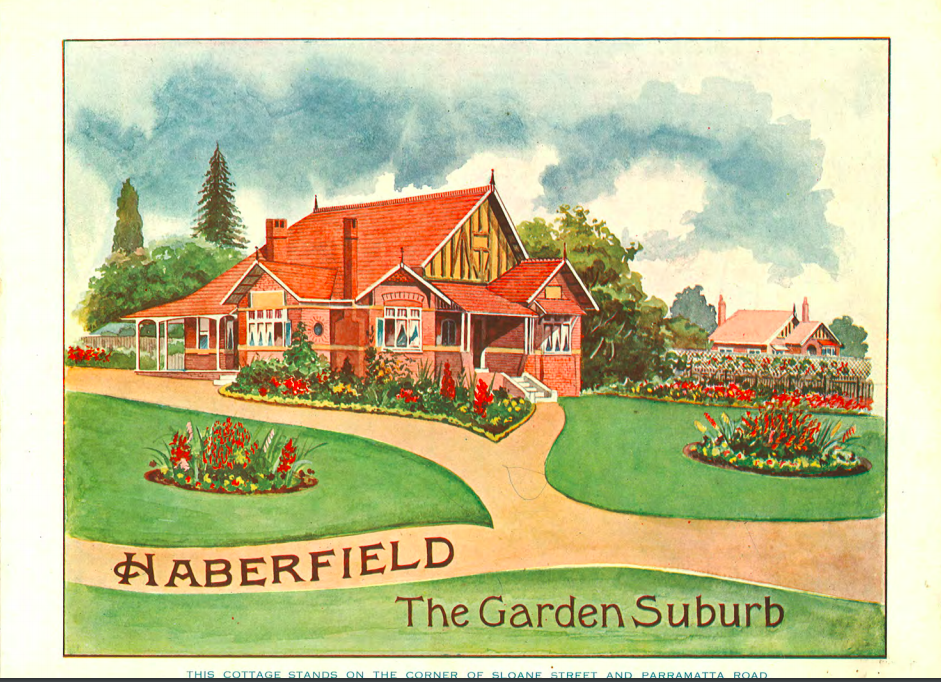
http://collection.hht.net.au/images_linked/31466.pdf
The Federation house design at the front had a lawn and garden beds shaped like ovals and circles, sometimes they were crescent shaped, and sometimes they were star shaped. There were a variety of different ones. They were planted with annuals, like stock, and standards, like a rose or a small shrub. Spade edging was also fashionable. I think it changed because having annuals is pretty time consuming. Then at the back you had the tall trees for a picturesque backdrop. But the backyard had oranges and lemons – citrus trees and fruit trees. So Haberfield was not important just for its Federation houses. It was also the gardens. When Haberfield was developed, Stanton employed a number of architects and each house had its own design: no two houses were of the same design. The point was your house was on display as your personal property and therefore the gardens at the front were low so you could look over the fence and over the gardens at the house. Some houses do have a hedge in front of them but they’re more the exception than the rule and that is also why they never had huge trees in the front garden, big trees were at the back. That is also why the front fences are low and you can see through them.
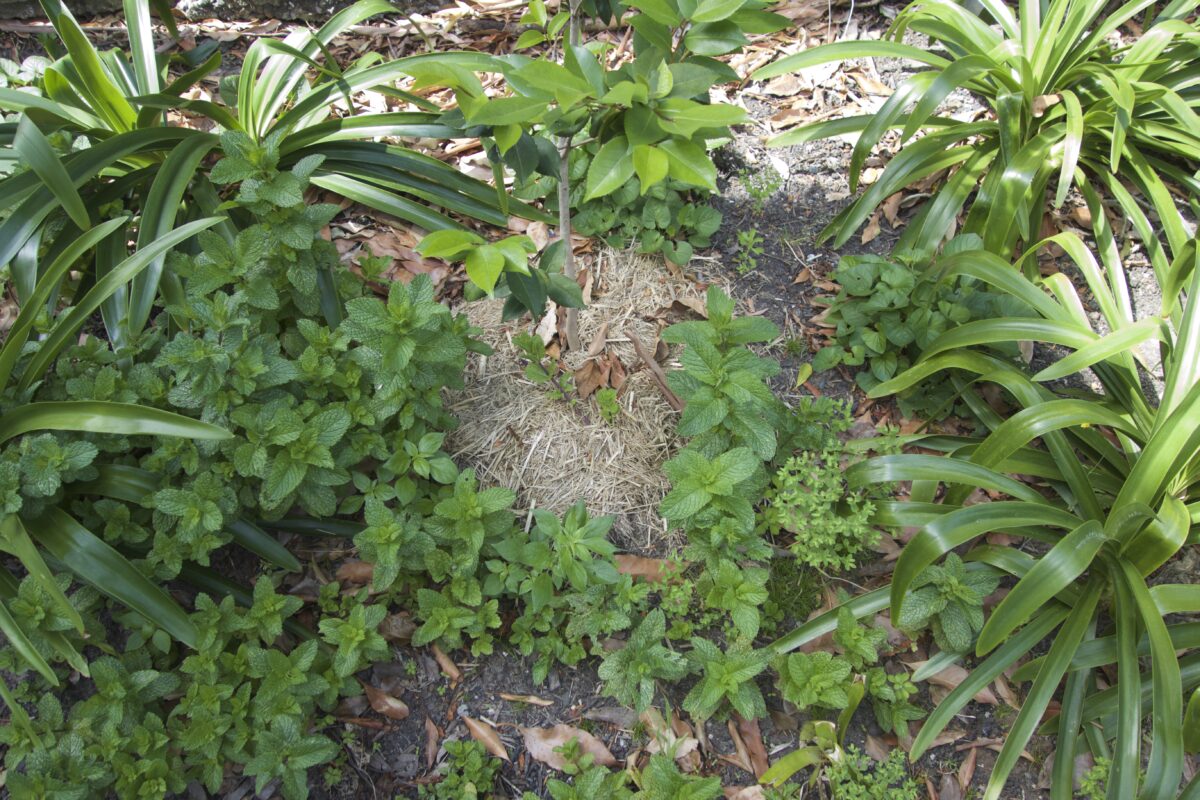
You can have camellias down the side because they form a frame around the house but they wouldn’t block the view from the street. I can’t give you any specific information about which vegetables were grown, but that did happen though. My grandfather and my father used to grow tomatoes: Grosse Lisse was the variety they used. But that was always down in the backyard. The front was for annuals and flowers, each house had a street tree in front, and then you had the nature strip with the grass. Then you had the footpath. Then you had the fence. Then you have the private garden here.
Today with the conservation area one must have a fence like mine: it must be a timber picket fence and I think just over a meter high. The idea behind it was to have a sense of openness: if you had six-foot-high (1.82 meters) brick fences up and down the street it would be like walking through a tunnel. And even only having single storey houses rather than two storeys means you can see more of the trees in the backyards, and just more of the sky. But I think that in Sydney it’s about the only suburb left that is just single storey.
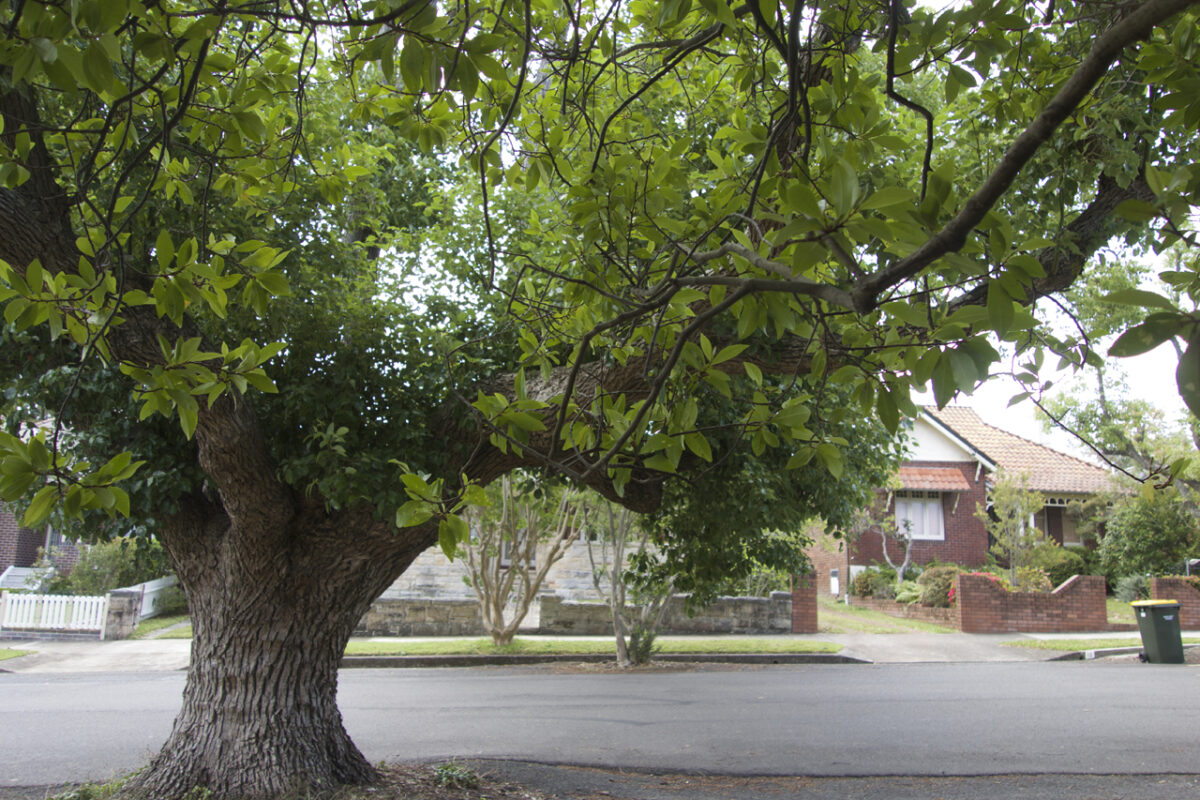
The idea I think was that the trees were for a canopy that you would walk under and that is why they are planted in the shoulder of the road, so that one half goes over the road and the other half goes over the footpath. But the line of sight, which was the phrase that Stanton did use, the line of sight should be straight down the street. Instead if you’ve got the verge planted with shrubs you’re feeling hemmed in. I think that’s also the reason why the houses were all single storey. There was a royal commission into town planning in about 1916 and Stanton used the phrase ‘line of sight’ of the houses. Even though the details of each house are different, there is a uniformity of the streetscape, because if you look at a line of houses all the gables just follow each other: you have this line of gables and the roofs all about the same height. This was the pattern they followed.
It’s easy just to put a hedge in the front and just clip it, or just a row of photinias that look after themselves. Perennials are okay: I have quite a few perennials and bulbs in my front garden. I am interested mostly in shrubs, trees and perennials, but also in annuals given their importance in the front gardens of Haberfield.
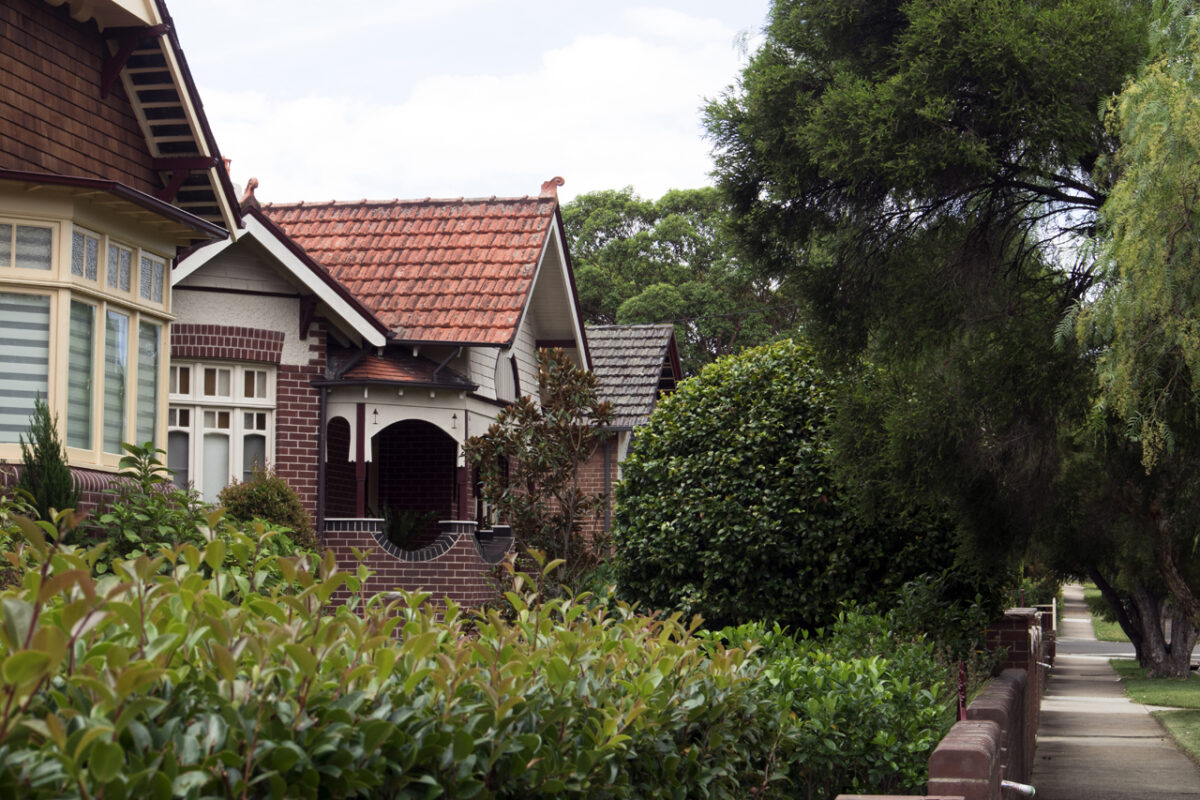
I learned about gardening from my maternal grandfather (Arthur Phillips) and my parents (Arthur and Mavis Crow). My grandfather and father mostly grew fruit and vegetables while my mother liked colourful front gardens with roses and annuals.
The garden is planned on several premises: half of the front garden is dominated by a port-wine magnolia that was planted by the original owners of the property (Carlton Fitzsimons, 1921-57). This and the camphor laurel street tree shade half of the front garden, which means that only certain plants are appropriate. Recently I have planted bulbs which seem to do well there: hippeastrums, day lilies, cliveas, cathedral begonias. The other half of the front garden has lawn which survives in the sun. Pelargoniums have been planted beside the front corner of the house which receives afternoon sun. I plan to plant annuals in the garden bed in front of the bedroom with the sunhood at the front of the house, This also receives the afternoon sun.
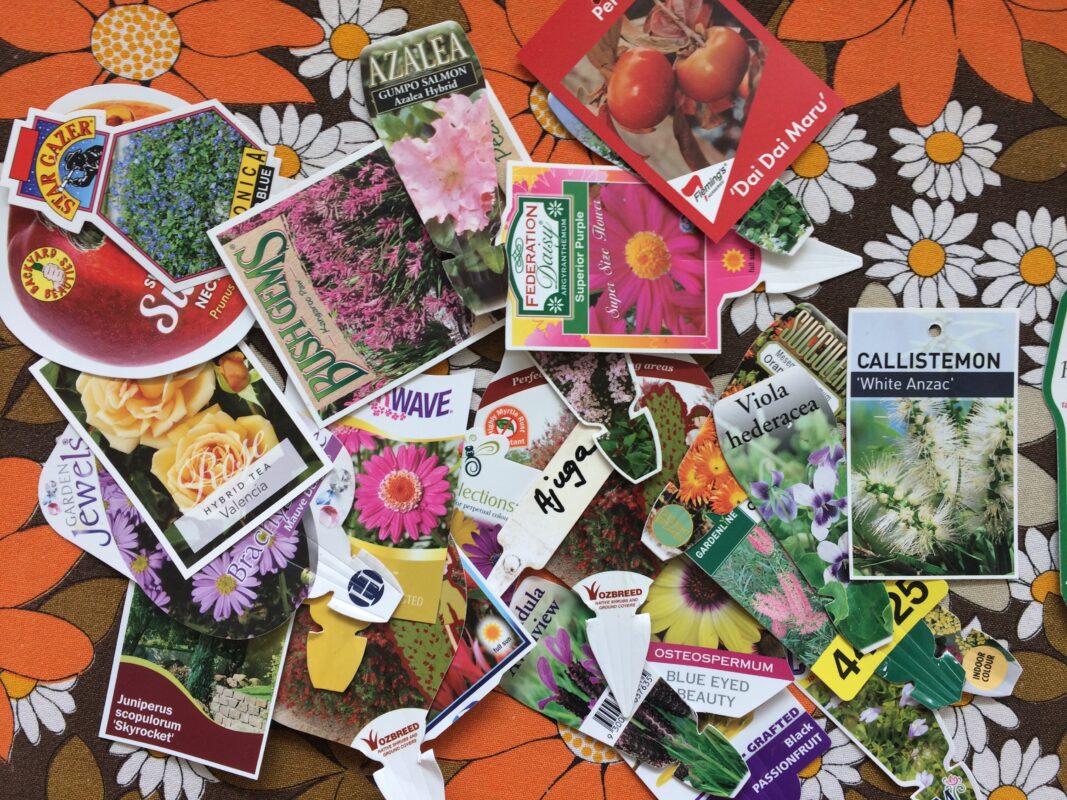
The back garden has fruiting plants: mandarin tree, passionfruit vine over the pergola, dwarf nectarine, persimmon, lemon. The Fitzsimons planted a plum tree near where the mandarin tree is but it was removed as the plums were not good to eat.
Low growing plants are at the back of the house to provide a pleasant view from the study and not to hide the view from the back of the house. Most neighbours have trees that provide a green outlook. 9 Dudley has two brushbox trees which were planted by the original owners of that property (Robinson). They also planted a Queensland firewheel tree which was removed by a subsequent owner. The vegetation in 7 and 9 Dudley Street and 50 Kingston intermingle. 50 Kingston has a native frangipane that stands out.
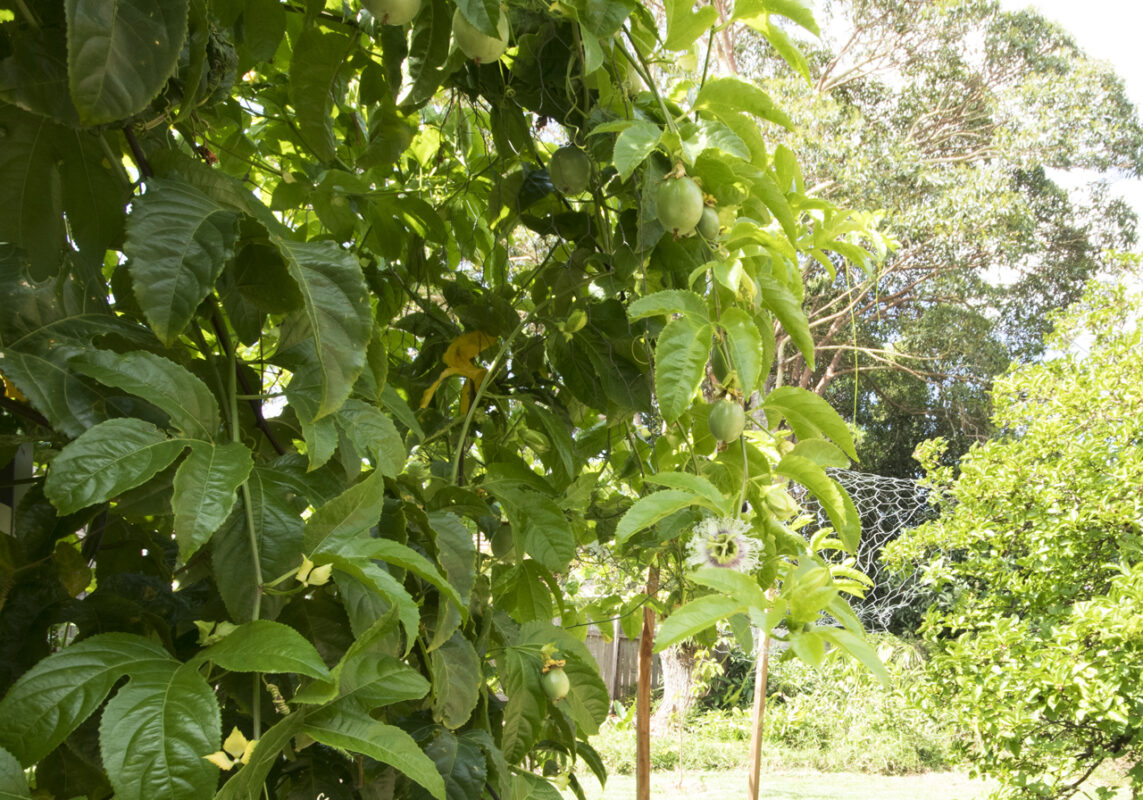
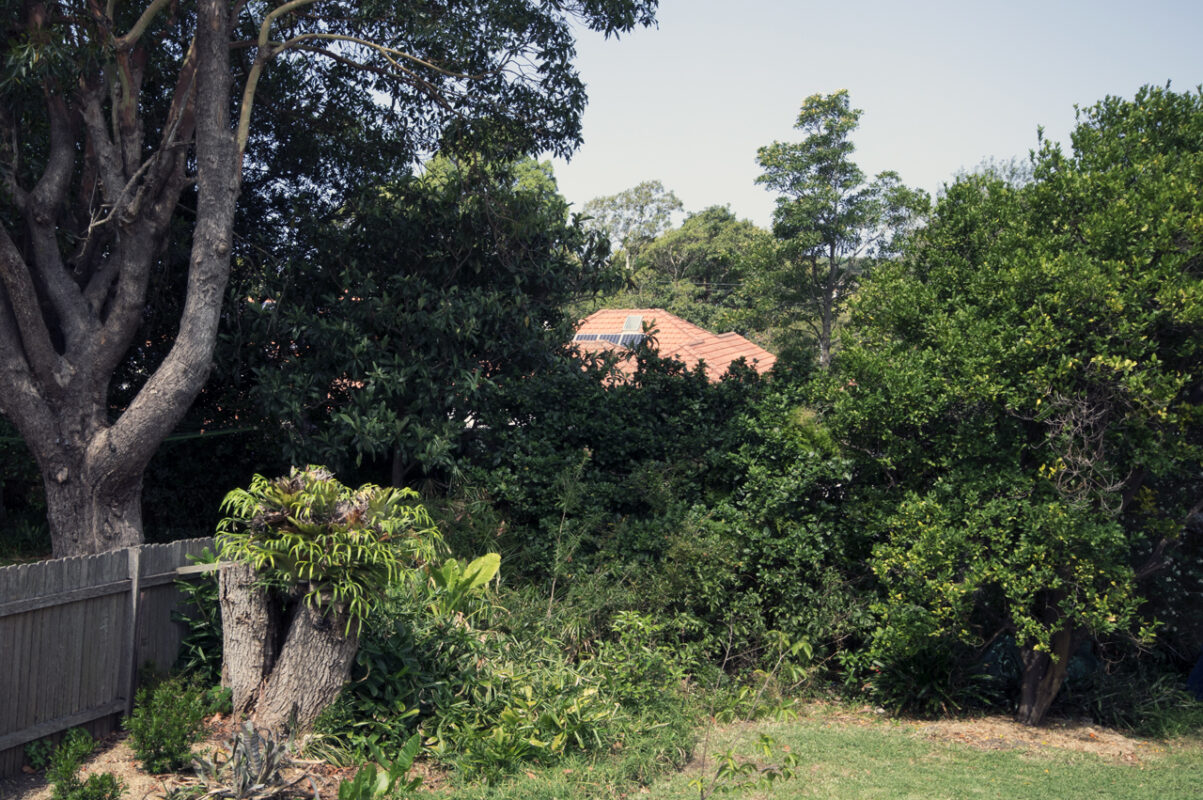
I have a staghorn that was grown by my father at our holiday house at Avoca Beach and was placed on the mulberry tree stump when the house at Avoca Beach was sold. The mulberry was removed because it dominated the backyard and its fruits stained clothes, walls etc. Two bottle brushes have been placed beside it to protect it from the western sun. The camelia near the back has a perfume. I hope to install a fountain near the back steps so the running water can be heard from the verandah. The brunsfelsia by the garage was planted by the Fitzsimons beside the front driveway, but moved to the present position because it was too big. The back section of the garden has to be renovated after the building work to extend the house. A large section of the mandarin tree was removed to allow machinery to dig a trench and absorption pit for drainage from the basement.
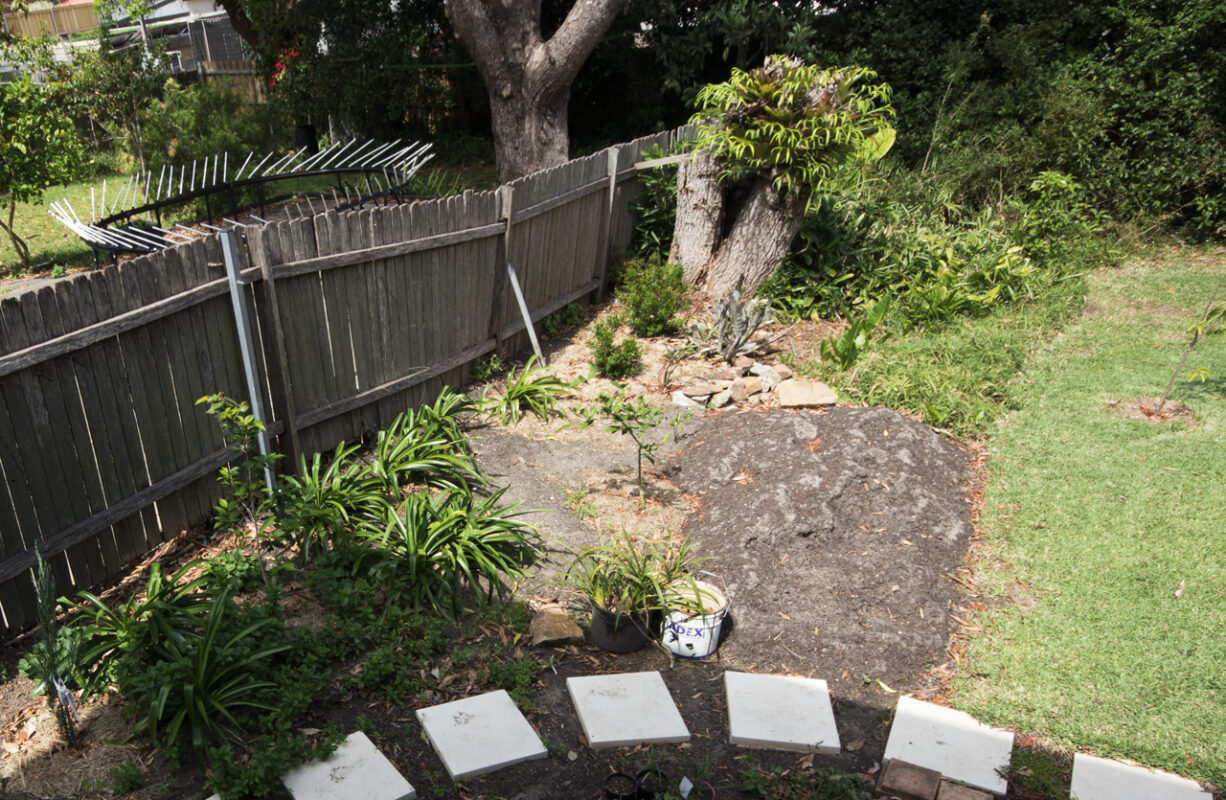
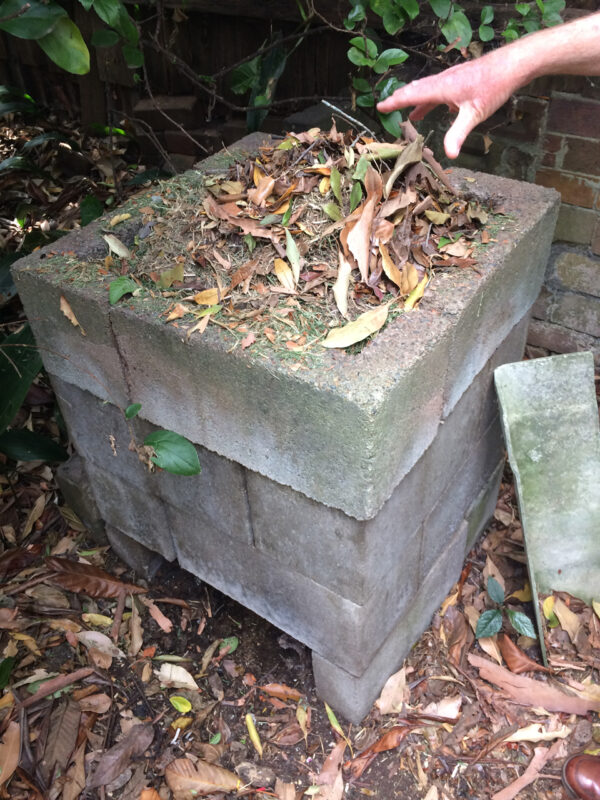
Three compost containers are in the back corners. Then my two compost heaps” one is from the council, and two are old incinerators. I told the council worker about them some years ago and he treated them with disdain. He asked if they work. They were already here and they are very good: you put scraps on the top and leave it for a couple of months and by the time it gets down to the bottom you have compost. So it works really well. Obviously the warmer the weather the faster and the better they work. I’ve also two friends over in Ashfield who live in home units and when they have a freezer full of scraps from the kitchen they ring me up and say ‘it’s time to get some more scraps’ All the grass clippings are put there.
I garden because I enjoy it. Since my return from my trip to England and Europe in August I try to spend about two hours three or four days a week in the garden: being in the fresh air, sunshine and exercising my body. With gardening one can see the results of one’s labour: flowers, fruit etc. It is also a family tradition to garden, it enhances the appearance of the property and puts into practice the concept of Haberfield the Garden Suburb.
I try to plant shrubs and perennials that do not require much maintenance but most plants need some attention, for instance fertilising, removing unwanted intruding plants (creepers, camphor laurel seedlings) and weeds, stopping or removing harmful insects (stink bugs or fruit flies). Roses in the front garden need attention to stop aphids. Powdery mildew in gerberas near the front gate needs to be sprayed.
I talk with other gardeners, more than exchanging, although I gave self- sown balsam plant to a friend in Boomerang Street and donated bromeliads to the Haberfield Association’s table at the Chamber of Commerce Big Day Out in the Haberfield shopping centre last Saturday.
Collaboration is important to gain knowledge about local gardens, what grows well in them and what does not. The annual Haberfield Celebration of Gardens provides a means of collaboration between gardeners. People get to know each other and can exchange gardening information. I am also in a circle of friends who have coffee at Garnish Café every Friday morning: gardening is often a topic of conversation. I get inspired by the creative use of plants that I know and by learning about plants that are new to me. I visit Open Gardens such as those at Berry and recently visited the parks at Toowoomba. I only experiment to the degree that I plant something in the hope that it will grow in a specific location. I usually do my homework and only plant in locations where plants have a good chance of survival. I only tinker when potting plants usually to let them develop before planting the garden, donate or sell. But learning while gardening is important: it can be from other people or learning from one’s own mistakes. Gardening programs on TV and radio often have good gardening advice. In my garden I try to follow the cottage garden tradition to some extent because the gardens of Haberfield would be in this tradition using colourful annuals and perennials. During the Federation period the back gardens were used to grow fruit and vegetables which is what I am doing at 7 Dudley. My garden is an attempt to follow the practices such as garden, layout, choice of plants, of the Federation period but introducing Australian native plants to attract birds.

0 Comments